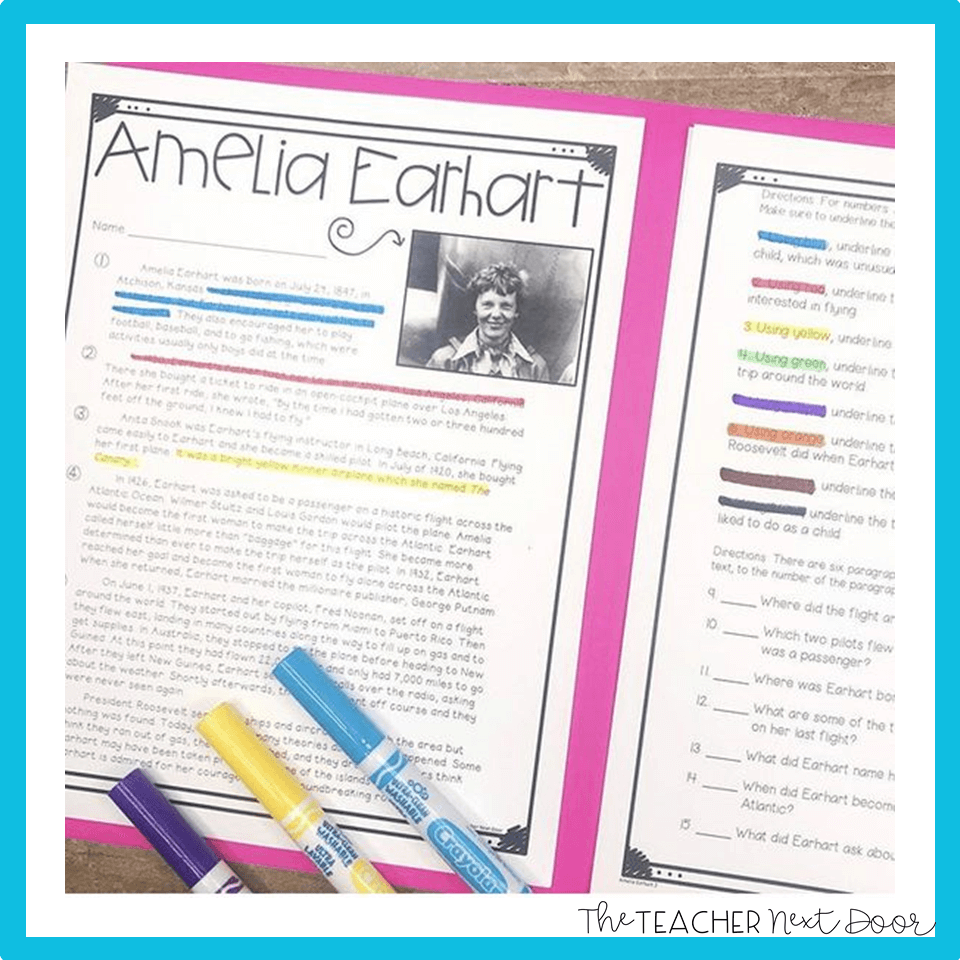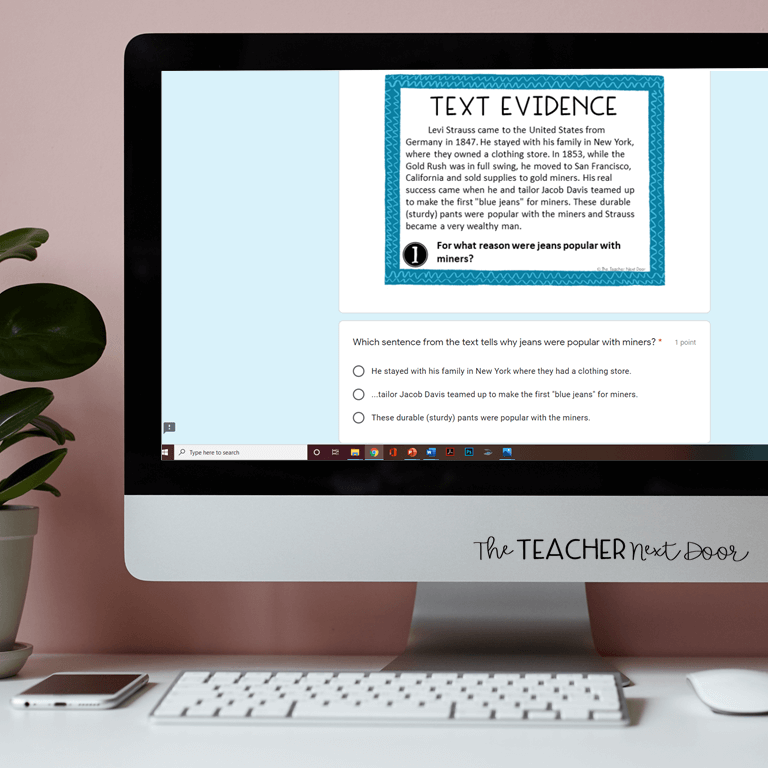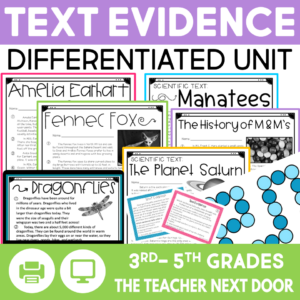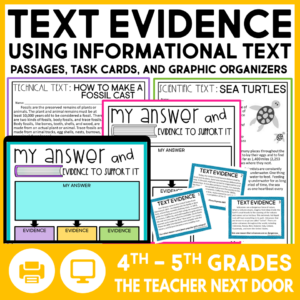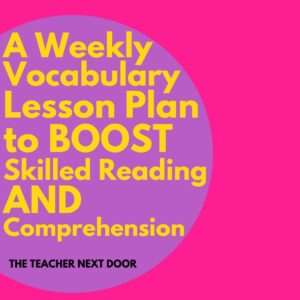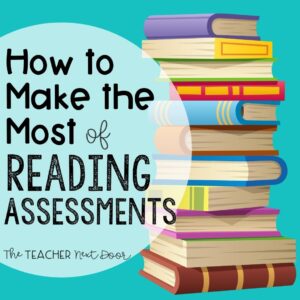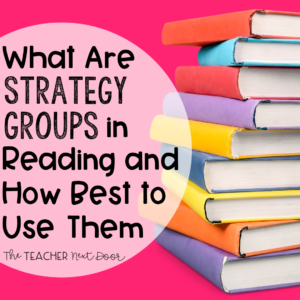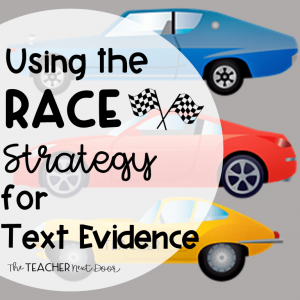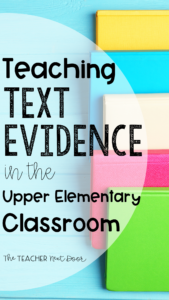
Teaching text evidence can be challenging…but it can also be a lot of fun! Want to find out how to lead your students step by step through the process of finding and citing text evidence?
Find out what works in my classroom here:
1. An Introduction or Review
By the fourth or fifth grades, most students will have been introduced to text evidence. It’s always good though to do a quick review to refresh their memories. First, we start off by talking about evidence in general and what that is.
For example, I ask students if there was a bank robbery, what kinds of evidence might we find? They come up with ideas like fingerprints, a witness’ description of what the robber was wearing, eyewitness accounts of what the robber looked like, a license plate of their vehicle and ideally… a bank video of the robbers. We talk about how this evidence gathering has a purpose…which is to identify the robbers and to prove our case.
Finding text evidence then is like being a detective, a reading detective. Our job is to carefully go back into the text and find the proof we need to prove our case!
2. Tip: Use Short Engaging Text
One of the most important things a teacher can do academically is to keep students engaged. If kids aren’t engaged, the battle is already lost and they will be unable or unwilling to learn.
So, do make sure that the passages you are choosing to use with students are short, ideally one page or less to start, to match their tiny attention spans.
Also, make sure that the topics of those passages are not only kid-friendly but truly engaging. Keeping lessons high interest will make most kids tune in and be ready to learn.
A few sources for interesting, short text…I like to use Scholastic Magazine or Weekly Reader. Chicken Soup for the Soul has some great one-page stories that can be used. The website Newsela also has interesting articles.
3. Color Coding
The next thing I like to do is to have students do some color-coding. We practice using worksheets or using a digital version that asks specific text-dependent questions. Kids use their crayons (they LOVE this, don’t ask me why!) to underline the text evidence. We make sure the sentence answers the question completely and is specific to the question too.
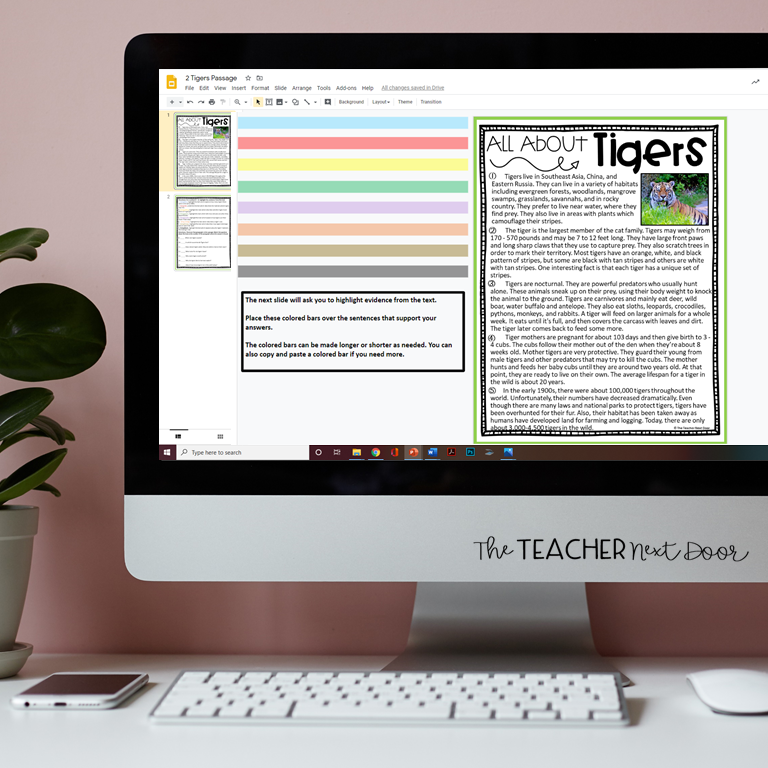
When they’re finished, I like to have kids (4th and 5th grades) correct their own practice pages much of the time (unless I need to take a grade). I like the fact that it gives them instant feedback. I think students like the reassurance that they’re on the right track.
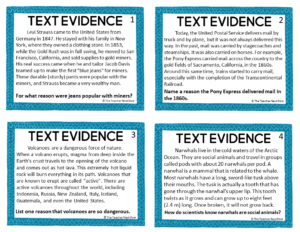
4. Task Cards or Games
I think I use task cards for just about every single concept I teach, text evidence included! I love the fact that task cards have such concentrated practice and kids can go through a whole set without feeling like it is a chore. I like to use the task cards either at a center/station as a game or as a scavenger hunt with the whole class.
For scavenger hunts, I set the task cards in order around the room where they’re easily seen. Each child takes a clipboard with a record sheet and a pencil and walks around the room solving text evidence task cards. I tell students that if a certain card has too many kids working on it, to move to the next card and to come back later. They do know it’s important to keep the numbering correct.
So, I suggest that they draw a very faint line over their record sheet for any task cards they skipped, so they don’t accidentally write the wrong answer there. This is easy to erase when they go back and actually complete that task card. I love this activity because the kids are so engaged and it gives them lots of opportunities for movement while practicing this reading skill.
5. Work on Sentences for Citing Evidence
So, we’ve done a bit of color coding and have been able to locate text evidence using task cards or games. The next step is to teach students to cite text evidence properly. I like to make an anchor chart with key phrases students can use to cite text evidence. Phrases like, According to the text…The author stated… or In the fourth paragraph, the passage mentioned… are perfect for students to use to introduce the text they’ve found.

After practicing this as a class, students start to memorize these little phrases and can rattle them off if asked. The point is not to memorize them of course, but the sentence stems make them feel a bit more confident that they know how to weave the text evidence together into a good sentence.
6. Quote Properly
Two things are needed when quoting from the text. The first one is just the ability to add quotations where they belong on the text. If your students are lacking this skill, it would be worth reviewing. The second is to quote the text evidence accurately. The quote should be exactly what the text stated unless you are paraphrasing and at this age for text evidence, I don’t even mention that, honestly.
7. Practice Citing Text with Short Passages
Now is the time for students to show you what they know using short (one page or less) passages. The goal is to get students so comfortable with this part of the process that when they are required to use longer passages, it won’t be as intimidating. I like to pair kids for the first day or two, and if most of the class is doing well, the next day is when they start working independently.
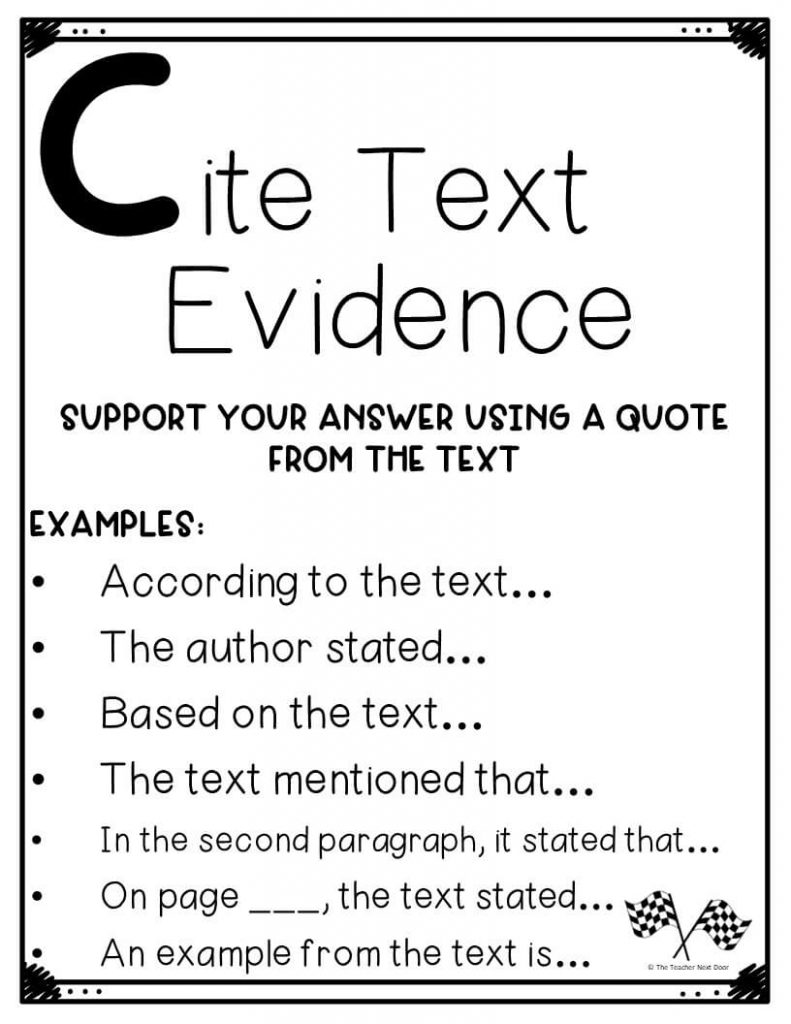
8. Constructed Responses Using RACE
Depending upon your set of standards, and which grade you teach, you may be required to teach your students to write text evidence questions as constructed response answers. If so, the RACE strategy can be helpful to use as a guide for that process.
Here are the basic steps:
R = Restate the Question
A = Answer the Question
C = Cite Text Evidence
E = Explain Your Answer
If you’d like more information about how to teach RACE, I have written a whole blog post that might be helpful to you:
Using the RACE Strategy for Constructed Response.
I always create the materials I need for my own classroom and this is no exception! If you’d like a time-saving set of materials, I do have a Text Evidence Kit you might like! It has 10 color coding passages, 8 practice passages, 3 sets of text evidence games (with 32 task cards in each set), plus posters for RACE! By the way, the entire unit is already differentiated for you! Each passage comes in three different levels and the three games are differentiated too!
I also have another Text Evidence unit I use for extra practice that comes in both print AND digital! It has lots of passages (2 are color coding) and a set of task cards too.
Looking for a Text Evidence Reading Center with three flex formats? Game? You’ll love this one with so many teaching and learning options!
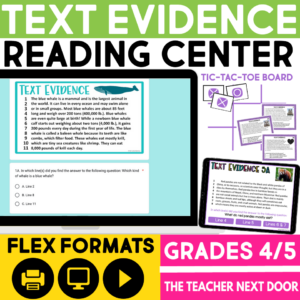
Click here to take a look at the 4th Grade Digital Text Evidence Unit.
Click here to see the 5th Grade Digital Text Evidence Unit.
Thanks so much for stopping by.


